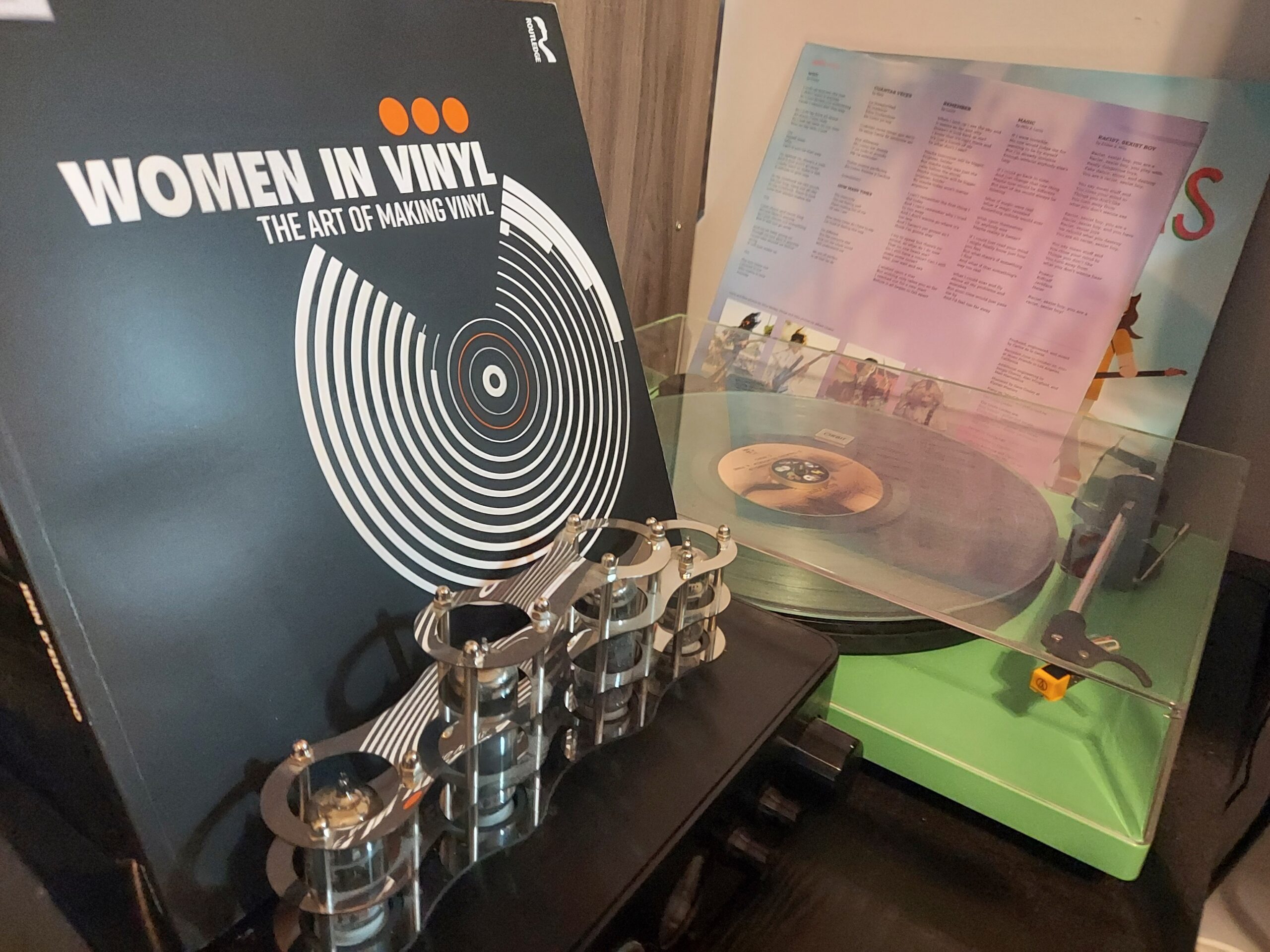Continuing on my quest to read ALL of the Audiobooks written by women and gender non-conforming individuals, Women in Vinyl: The Art of Making Vinyl written by Jenn D’Eugenio came across my desk. As a self-proclaimed nerd, I love vinyl, therefore this book would have found its way into my library anyway. Jenn D’Eugenio founded the Women in Vinyl non-profit to uplift marginalized humans working in vinyl. After starting as a blog to share individual stories, it has become a resource hub that even has a podcast. D’Eugenio herself is the Sales and Customer Service Director of Gold Rush Vinyl in Austin Texas.
Each interview has the same formula. There is a short biography, then 4 questions: motivation for getting into the industry, favorite thing about working in vinyl, advice for folk wanting to work with vinyl, and what they wished more people knew about vinyl. The interviews are organized based on the vinyl manufacturing process. Starting from mastering, then lacquer cutting, electroplating, through the distribution and marketing and including DJ-ing. For many of the women featured in the book, there is a love of listening to music. While enjoying consuming music is emphasized, music performance is only necessary for the DJ’s. Working in vinyl allowed them the chance to have a job they loved. That love translates into the uniqueness of vinyl and prolongs it as a medium for music consumption.
If you follow Soundgirls, some of these names are familiar. The vinyl industry is only a small branch within the music industry and requires people to work multiple roles. Also, many of the women interviewed are involved in outreach in vinyl and the music industry. D’Eugenio addresses why there is an overlap between the Women in Vinyl biographies and the board of Women in Vinyl. At a panel discussing women in vinyl, and realizing the panel was more about vinyl in general, Jenn D’Eugenio and her fellow panelists realized there was a need to highlight those who work with vinyl that are not just men. And just like that original panel, the book reads as a collection of experiences of working with vinyl. Even though vinyl is a billion-dollar industry, through Women in Vinyl it still feels tight-knit.
I found myself pouring through the interviews like a deluxe fanzine. Women in Vinyl makes for a smaller coffee table book that is sparse on pictures but essential for placing next to your turntable. Unlike some of my other reviews that collect names and interviews in one volume, this is not a “pioneer” or “history-maker” grab-bag, but instead the names of those who touch and care for your records before they reach your hands. They are the ‘Mothers of Vinyl,’ standing proud as their children spin on record players in homes worldwide.
